What to visit in Hérault? The complete guide !
Hérault is the fourth most visited department in France, with over 38 million overnight stays in 2018*! Of course, the summer period is the most popular for holidays, with the Mediterranean coastline and its fine sandy beaches attracting tourists from all over Europe, in search of sun and relaxation.
However, to stay in the Hérault without visiting the hinterland would be a sacrilege! A missed opportunity to discover the territory which holds the most sites labelled “Grands sites de France”, major heritage sites, picturesque villages and exceptional terroirs, characteristic of the Languedoc destination.
To help you prepare your visits, here is a (non-exhaustive) list of must-see tourist sites, to be discovered alone, with family or friends and whatever the season 😉
*source ADT 34
Heritage, don’t miss the essential!
Abbeys, priories, wine tourism heritage, discover these historical monuments, witnesses of the rich past of Languedoc.
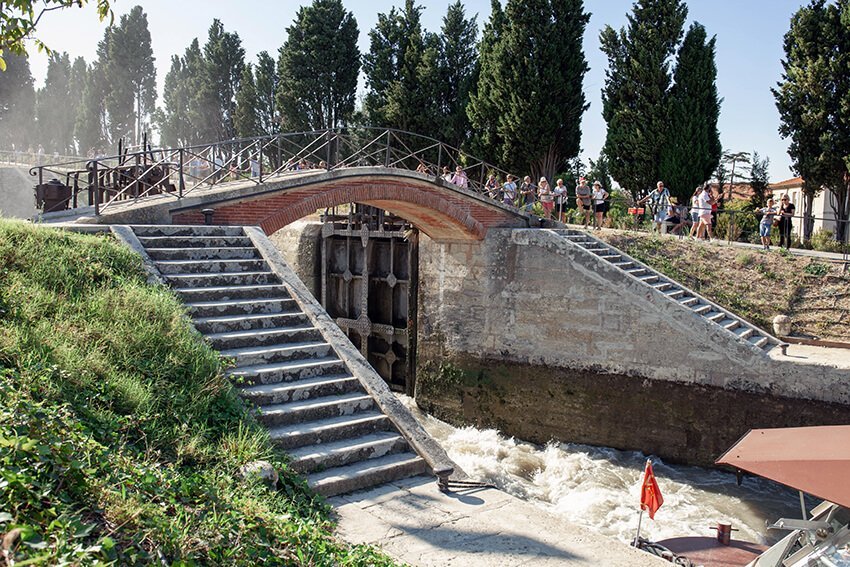
The 9 locks of Fonséranes – Canal du Midi
Located 3km from the centre of Béziers, the Fonséranes locks are the major structure on the waterway that is the Canal du Midi. It is the work of the Bitterois Pierre Paul Riquet, designer of the Canal du Midi, who had to design this staircase to make his canal cross a 25 m difference in level.
The Fonsérane Locks were renovated in 2017 and are the third most visited monument in the Occitanie region. They are accessible free of charge, only the car park is subject to a charge.
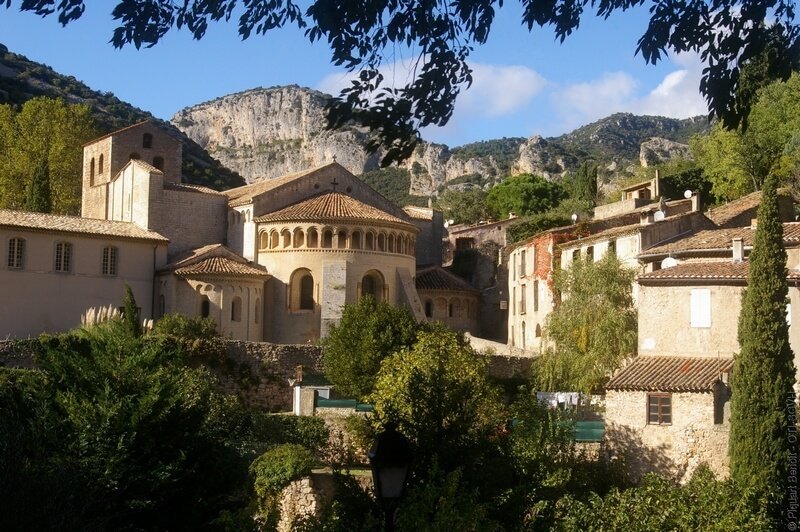
Gellone Abbey in Saint Guilhem le Désert
One of the most beautiful abbeys in the Hérault, in one of the most beautiful villages in France!
Listed as a Unesco World Heritage Site, this jewel of Romanesque art is an architectural masterpiece with a pure and sober aesthetic. Founded in the 11th century by Guilhem, a valiant companion of Charlemagne, who, after laying down his arms, decided to leave to meet God.
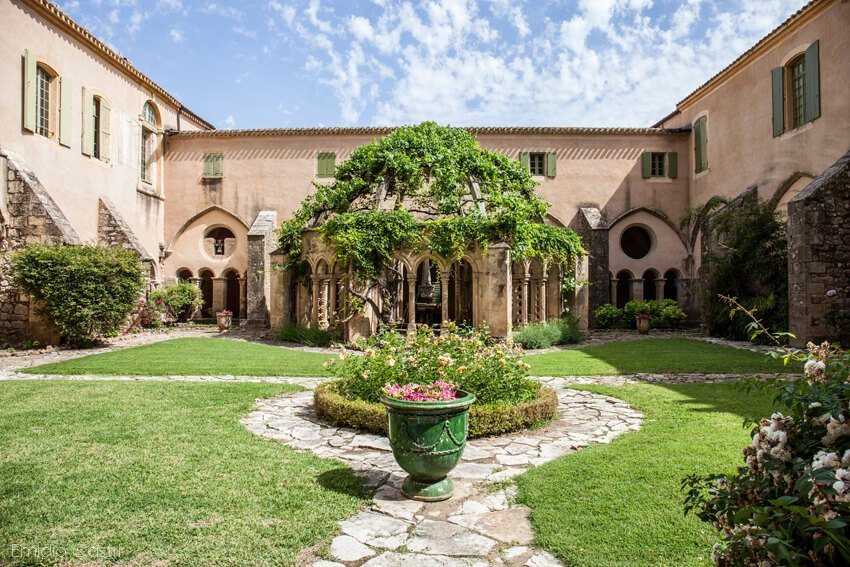
Valmagne Abbey
Located in Villeveyrac, near Mèze and the Etang de Thau in the heart of the Languedoc vineyards, Valmagne Abbey is one of the most beautiful Cistercian abbeys in France, and one of the oldest vineyards in the Languedoc!
Founded in 1139 by the powerful lords of Cabrière, Valmagne Abbey experienced a period of splendour and wealth between the 12th and 14th centuries, becoming one of the richest abbeys in the South of France.
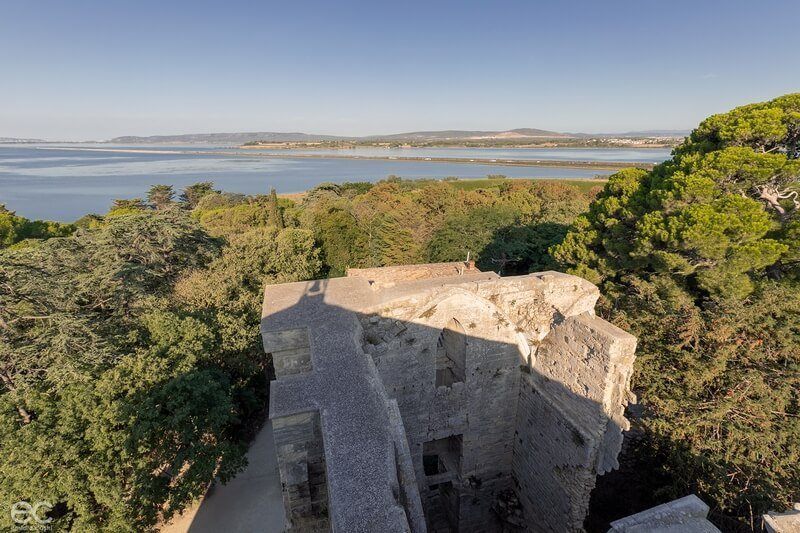
Maguelone Cathedral
A true jewel of Romanesque architecture, situated on a peninsula between the sea and the lakes, near Palavas, Maguelone Cathedral was, more than a thousand years ago, the seat of an important bishopric, a papal stronghold and the temporary refuge of several popes, before being abandoned, looted and ruined.
Since the end of the 1960s, the building and the estate have been managed by the association Les Compagnons de Maguelone. Their vocation: to ensure the preservation and development of the site and to work towards the social and professional integration of people with disabilities.
On site: audio-guided tour, market gardening and production of organic wines, fishing, restaurant/tasting counter
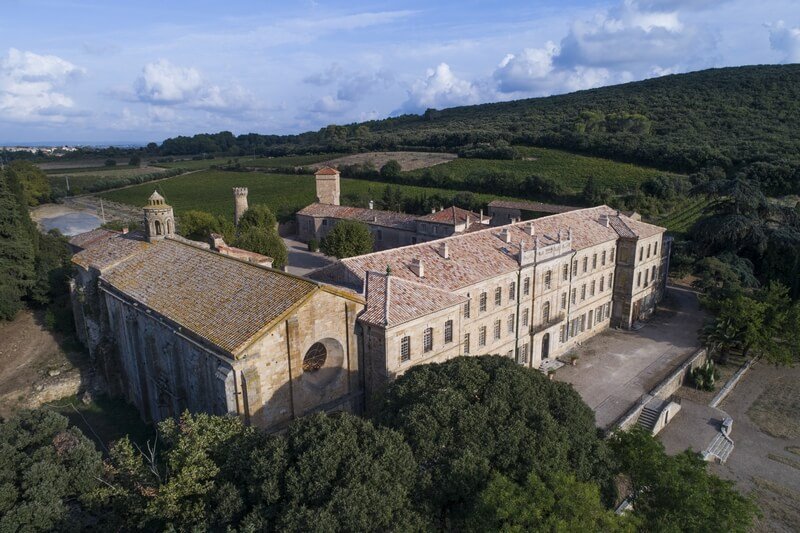
Cassan Abbey
Located at the gates of Pézenas, in the heart of vineyards and olive trees, Cassan Abbey has been classified as a historical monument since 1953. A former monastic residence, occupied by the Canons Regular in the 11th century, then a powerful Royal priory and a sumptuous Princes’ residence, Cassan Abbey has had an eventful history over the years and has undergone numerous transformations (12th century church, 18th century salons) which give this site a unique character.
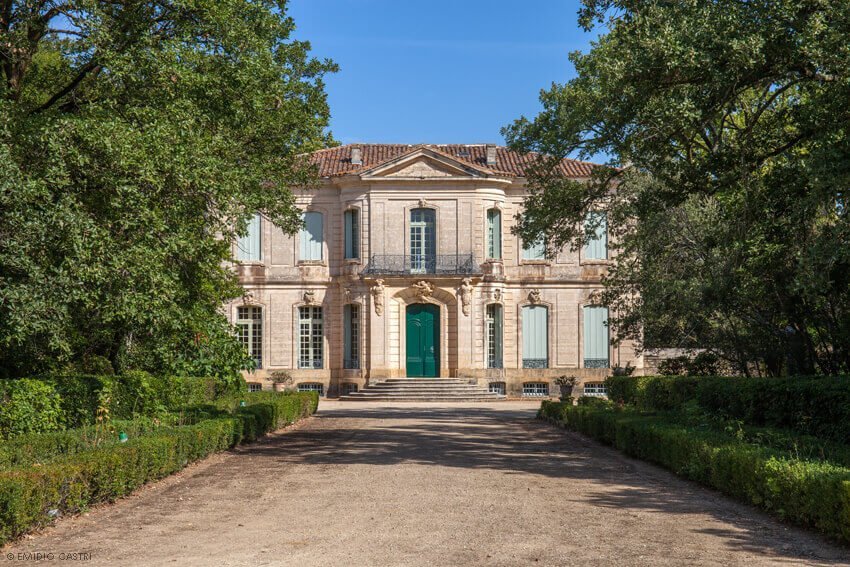
The Château de L’Engarran
One of the most beautiful “Folie” in Montpellier!
The Château de L’engarran is located in Laverunes, at the gates of Montpellier. Surrounded by a magnificent French-style park, which earned it the “Remarkable Garden” label, this historical and winegrowing monument is of great architectural finesse. It reveals, through numerous details, the wine-growing vocation of the site but also the unconditional love of the builder Jean Vassal (1730), for the woman of his life.
The Château de l’Engarran has the particularity of being a living place, inhabited part of the year and open to guided tours. In addition, it produces high quality wine, including Grés de Montpellier, which can be tasted!
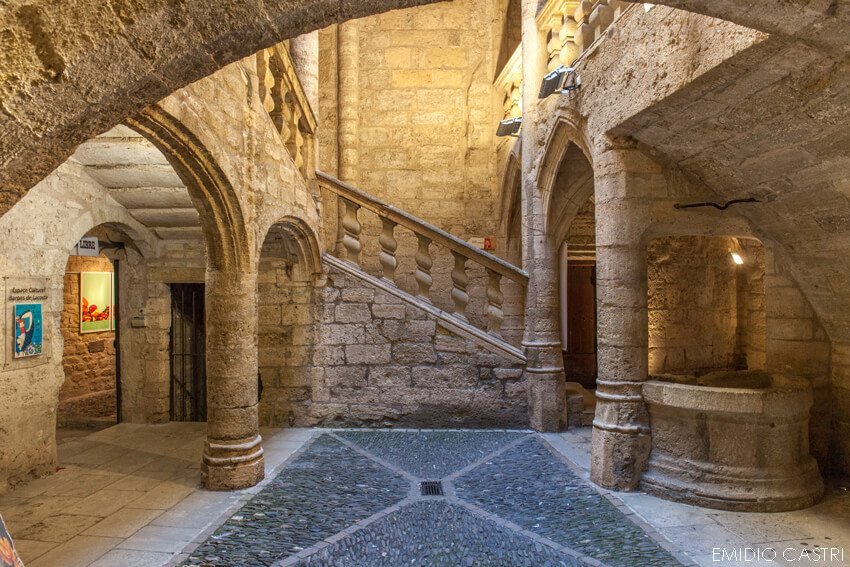
Pézenas
A royal town in the 13th century, capital of the States of Languedoc in the 16th century, a place of residence for Molière and his famous theatre, Pézenas is a small town of character, picturesque and lively, with a largely preserved architectural heritage.
As you stroll through the pretty cobbled streets, you can marvel at the magnificent town houses or stroll through the many craft shops. Pézenas has been part of the network of Cities and Countries of Art and History since 2002.
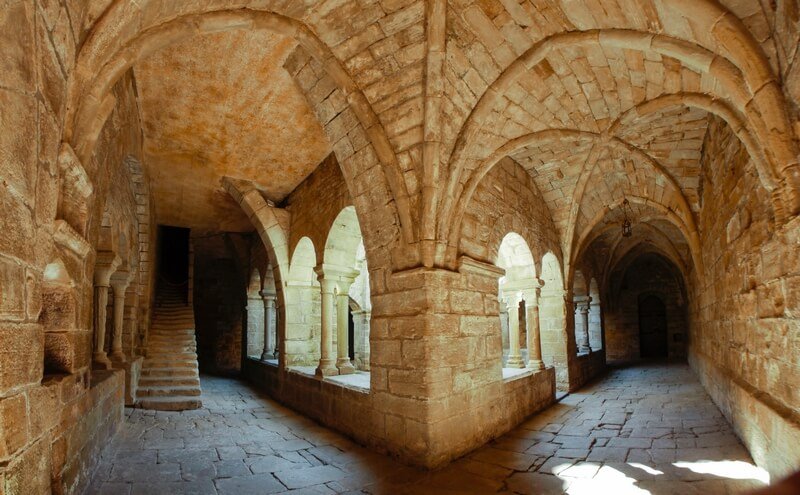
Saint Michel de Grandmont Priory
Near Lodève, on a site occupied since prehistoric times, this jewel of Romanesque architecture is the only monastery of the Grandmont order that remains in its entirety.
Surrounded by 30 hectares of forest, populated by deer and fallow deer, and dotted with 5000 year old dolmens and megaliths overlooking the valley, the Prieuré Saint Michel de Grandmont is an enchanting and serene place where you can feel good!
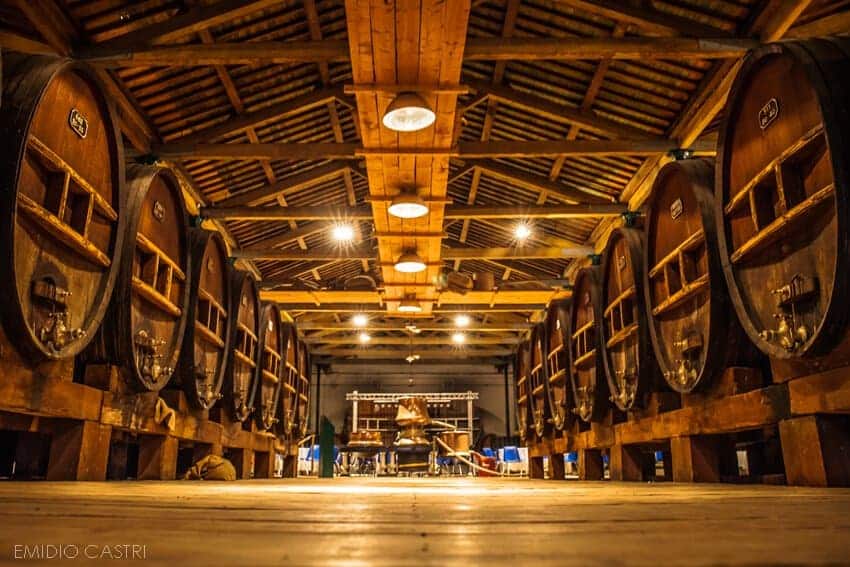
Maison Noilly Prat
A world-renowned aperitif*, this drink made from wine and spices from all over the world has been produced for more than 200 years (1813) and in the greatest secrecy, in the picturesque port of Marseillan.
In addition to being the place of production, the Maison Noilly Prat is a completely renovated site to visit. During the tour, you can discover the Enclos and its thousands of barrels that glow in the sun, or the Mistelles cellar and its huge hundred-year-old tuns.
*To be consumed in moderation!
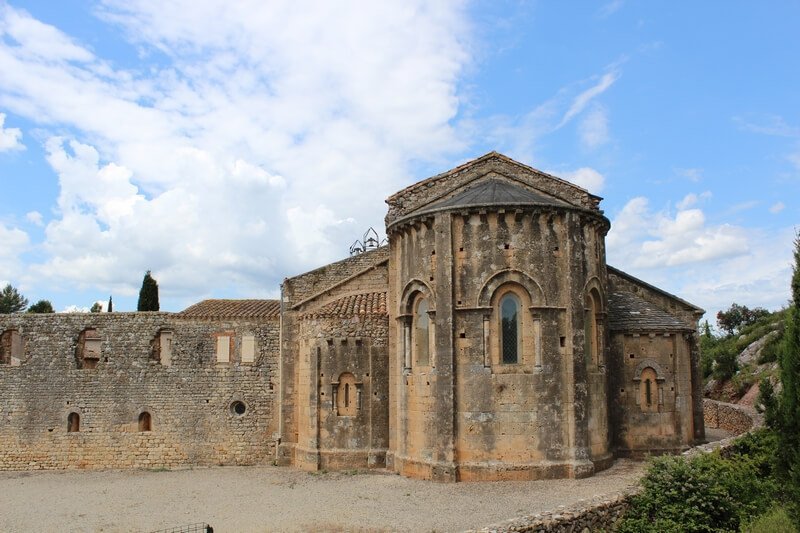
Fontcaude Abbey
Situated between Saint Chinian and Béziers, in a natural setting, on a stage of the Santiago de Compostela route, Fontcaude Abbey is a jewel of Romanesque art. Mostly destroyed during the Revolution, the remains of Fontcaude Abbey have been beautifully restored.
What are the most beautiful natural sites in the Hérault?
Caves, parks, lakes and natural sites…the Hérault’s nature side is here!
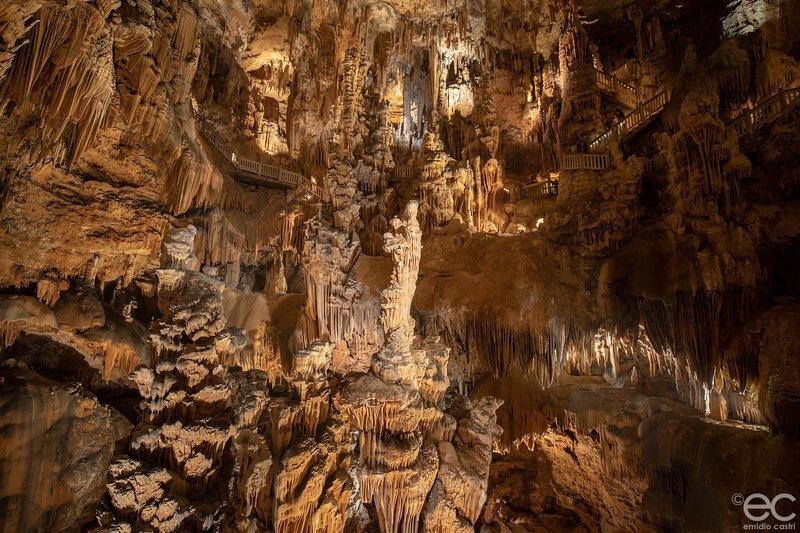
The Grotte des Demoiselles
The Grotte des Demoiselles is located near Ganges, at the foot of the Cevennes, on the border of the Gard department.
A marvel of the underground world, it was the refuge of the Camisards during the war of religions. Equipped with the first underground funicular in Europe, access is particularly easy. All along the route, the draperies formed by stalagmites and stalactites, sublimated by a warm lighting, seize us by their gigantism. A foretaste before reaching the highlight of the visit, a space of impressive dimensions (50 metres high, 100 metres wide), which earned it the nickname “Cathedral of the Abyss”. Impressive!
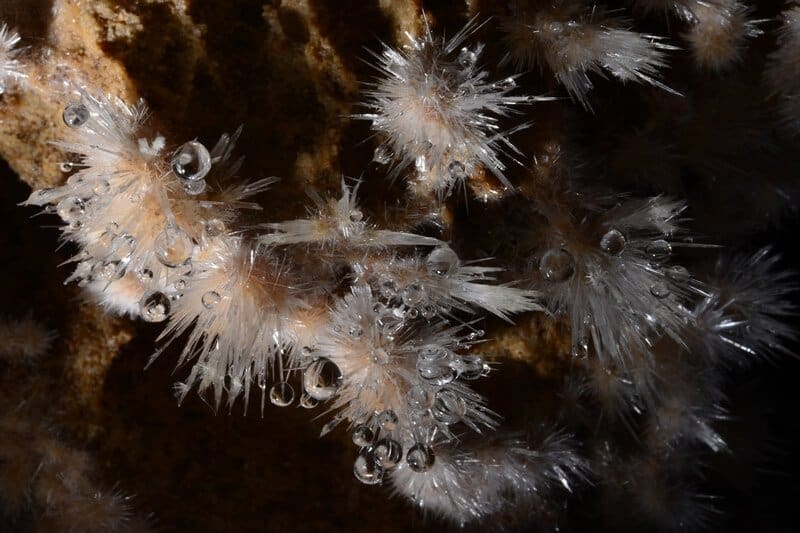
The Grotte de Clamouse
Located in Saint Jean de Fos, near the village of Saint Guilhem le Désert, the Grotte de Clamouse is a remarkable cave, classified by the Ministry of Ecology.
It is distinguished by the richness of its concretions, notably the rare aragonite and eccentric crystals.
Set off on a journey into a fairytale world, a moving visit to the bowels of the earth.
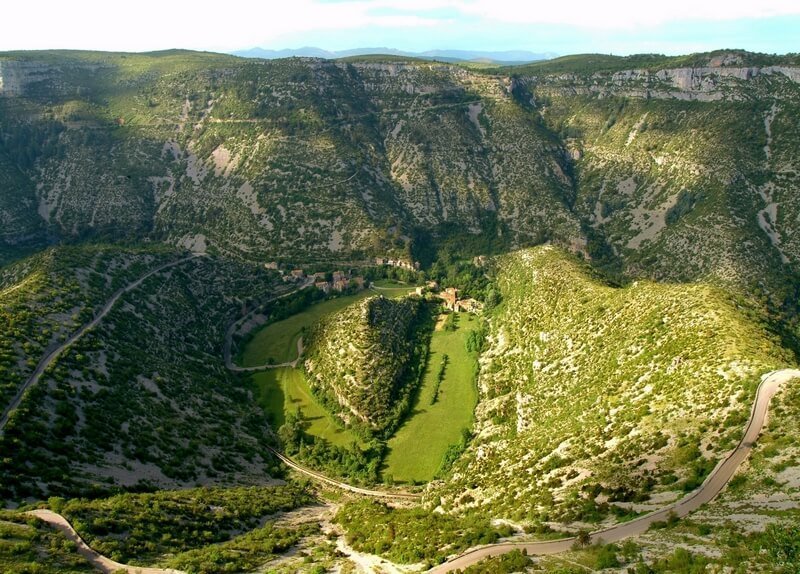
Nestled in the Vis Gorge, at the foot of the Larzac and Cévennes mountains, the Cirque de Navacelles offers a breathtaking panorama with unique, chaotic landscapes shaped by nature and man.
Inscribed on the UNESCO World Heritage List in June 2011 as a cultural landscape of Mediterranean agropastoralism, but also labelled as a “Grand site de France” and “Grand site d’Occitanie”, the Cirque de Navacelles is undoubtedly one of the most important natural sites in Occitanie.
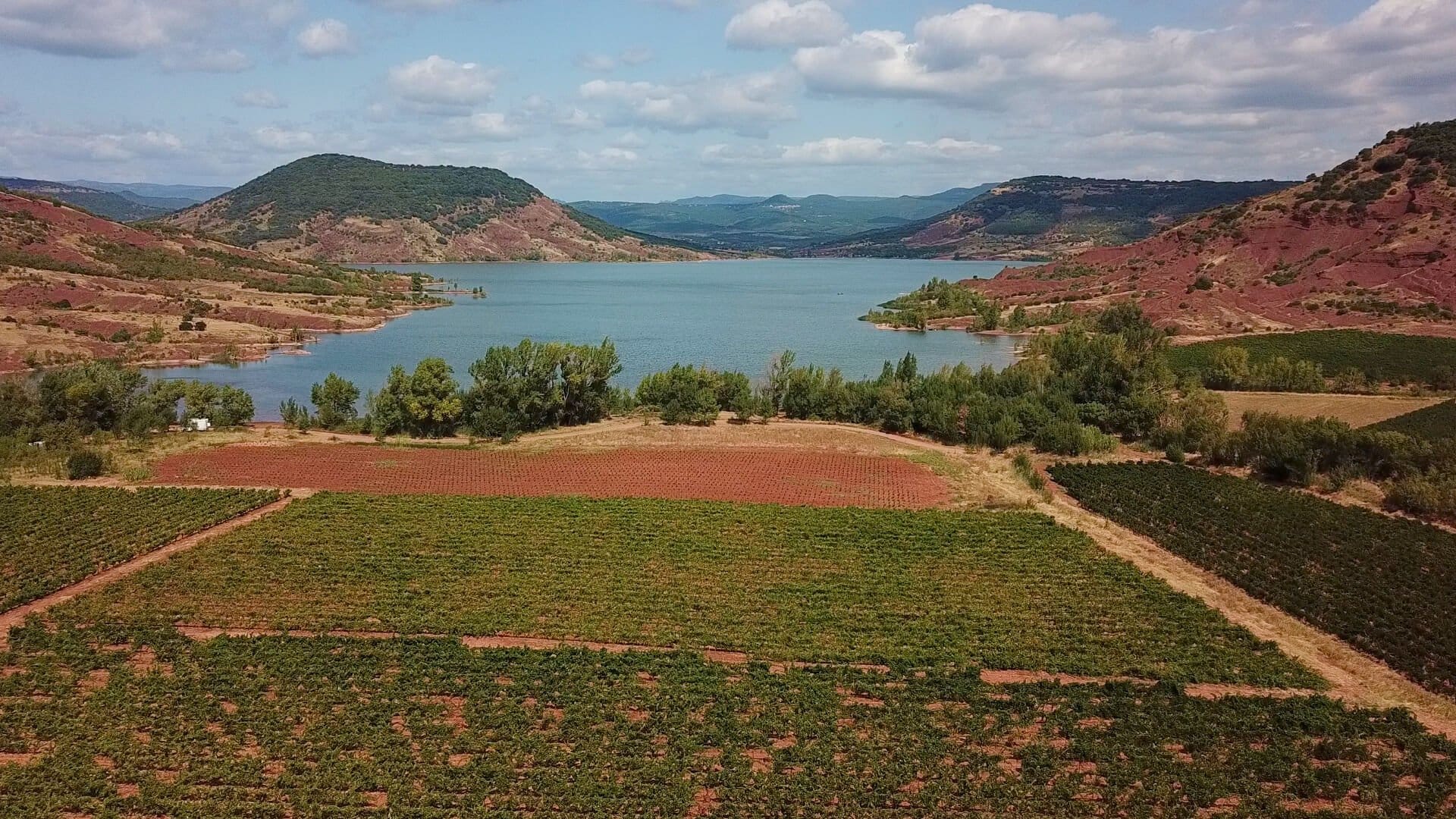
The Lac du Salagou
With its ruffled earth (red sandstone), the “Martian” landscapes of the Salagou lake seem to come straight out of a science fiction film.
Created in 1969 to serve as a water reserve for farmers, it has become a leisure site in its own right where you can enjoy all sorts of activities: swimming, fishing, windsurfing, trail running, hiking…
The Lac du Salagou is one of the most emblematic sites and landscapes of the Hérault.
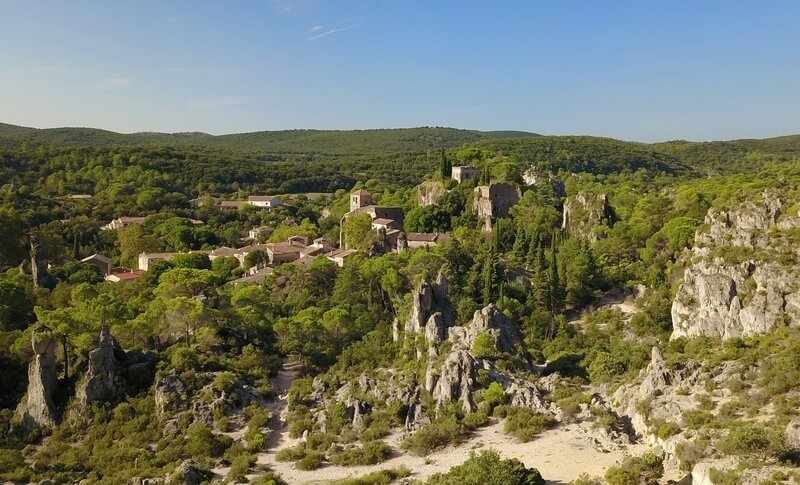
The Cirque de Mourèze
In the vicinity of Salagou, the cirque of Mourèze is a site of dolomitic rock with extraordinary shapes. Hundreds of limestone and magnesium peaks sculpted and twisted by erosion reveal a fantastic world of giants and stone monsters.
This site is best appreciated during walks or hikes (marked trails from 1 to 4 hours)
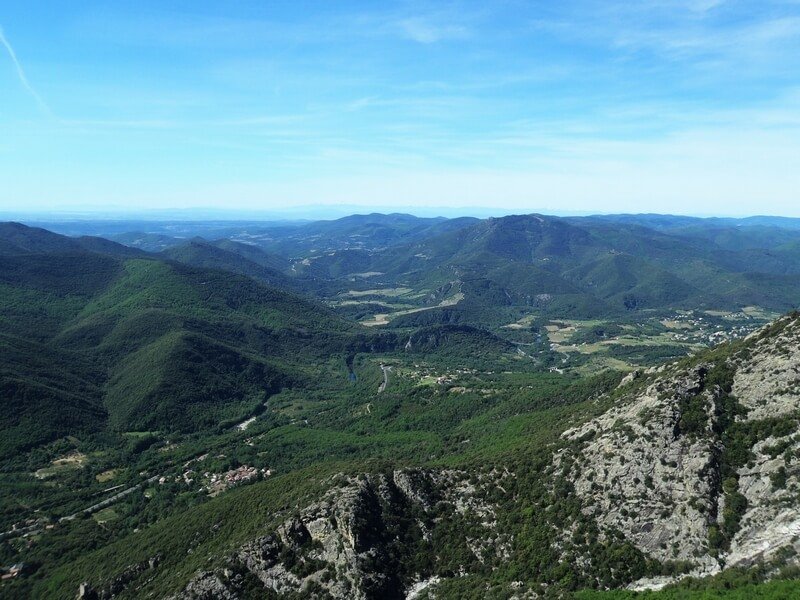
The Haut Languedoc Regional Nature Park
Straddling the departments of Tarn and Hérault, the Haut Languedoc Regional Nature Park is made up of 92 low and medium mountain villages, including Olargues, a picturesque medieval village classified as one of the most beautiful villages in France.
Recognised at a national level for its exceptional heritage and landscape value, the park is a paradise for lovers of fauna, flora and, more broadly, nature activities.
A tip for walkers: don’t miss the hike around the classified natural site of the Héric gorges, up to the summit of Caroux, one of the most beautiful in the area.
Museums, archaeological sites, cultural spaces: our selection
As guardians of our history and our memories, these exceptional sites have a vocation to enrich us, to shed light on the past and the present!
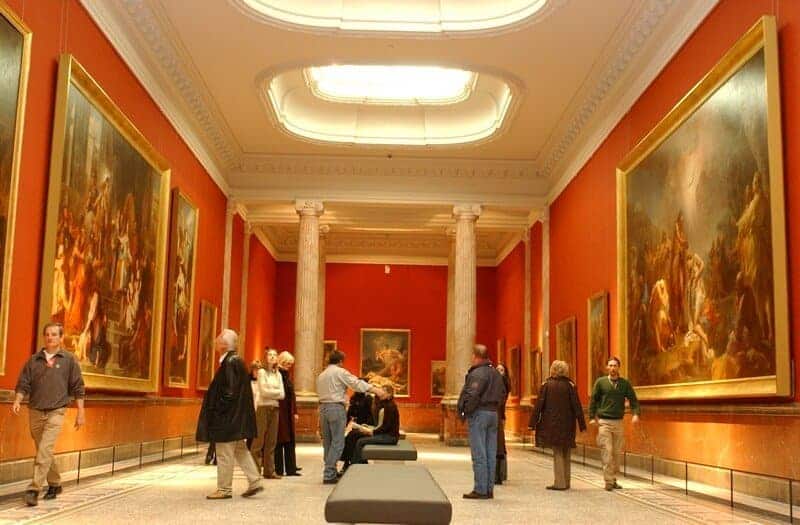
The Fabre Museum
The Fabre Museum is the main museum of fine arts in Montpellier.
Created in 1828 by Baron François-Xavier Fabre, a painter and collector, it is one of the most beautiful French public collections, constantly enriched thanks to donations from collectors and artists such as Fabre, of course, but also Valedau, Bruyas, Bonnet-Mel, Cabanel and Bazille.
Pierre Soulages, the most contemporary of them all, has also shown his attachment to the museum and to the town by generously donating his collection, allowing an overview of his entire career.
The permanent collection is exceptionally rich and presents masterpieces from the 14th century to the present day by artists such as Delacroix, Courbet, Renoir and Manet. Every summer, the museum hosts a large temporary exhibition on major artists: 2018 “Picasso donner à voir” – 2019 “Vincent Bioulès, Chemin de traverse”.
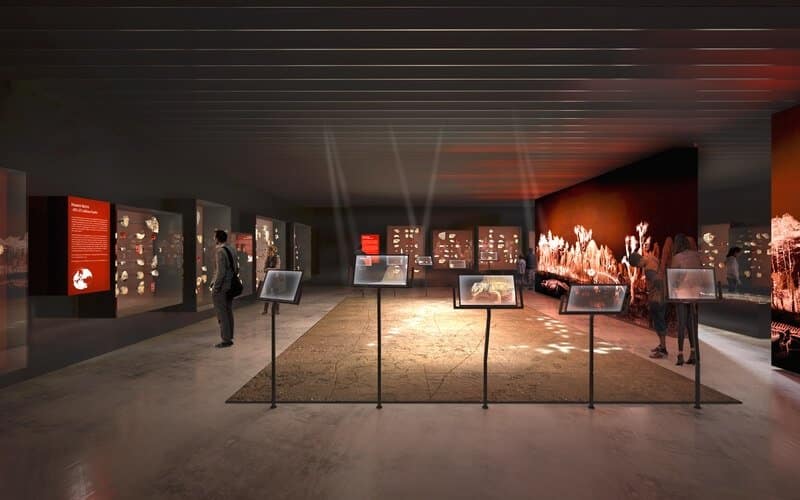
The Lodève Museum
The Lodeve museum is one of the few museums in France to cover such a vast period of the earth’s history (500 million years) from locally collected collections.
This museum, entirely renovated in 2017, after 4 years of work, plunges the visitor into the immensity of time through the three permanent exhibitions “Traces of life”: 700 m² in immersion in the history of the Earth since 540 million years. The “Traces of Life” exhibition, “Footprints of Man”, dedicated to prehistory, and “Memories of Stone”, focusing on the sculptor Paul Dardé (1888-1963), are also on display.
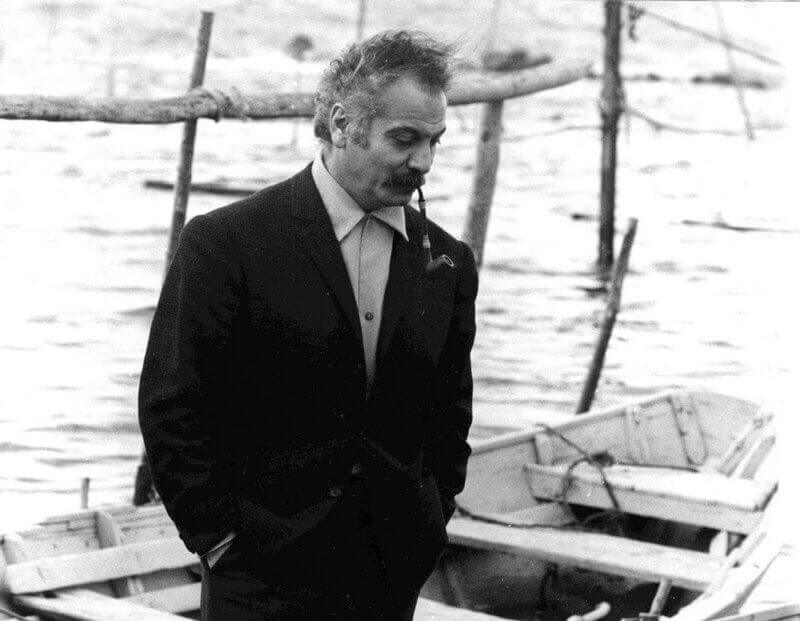
Georges Brassens Museum
George Brassens, the author-composer-poet born in Sète, is an emblematic figure of the town and has a space dedicated to him.
In this lively place, it is the voice of George Brassens that accompanies you via an audio guide, on the path of his life and work. An amazing experience in the intimacy of the artist.
The Espace Georges Brassens is located near the Le Py Cemetery in Sète, where the artist is buried.
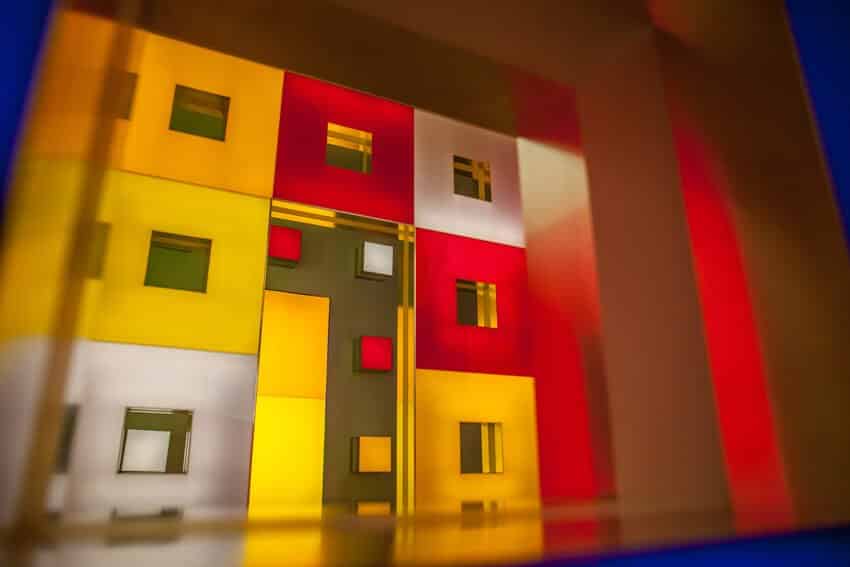
The Regional Museum of Contemporary Art of Sérignan (MRAC)
Located in Sérignan, on the shores of the Mediterranean, the regional Museum of Contemporary art presents temporary exhibitions and a permanent collection on more than 3,000 m², which asserts strong artistic choices, supports French and international artists and invents new forms of mediation to art.
Designed by Daniel Buren, this luminous place is composed of different spaces that the visitor can freely browse through, some of them majestic works.

Halle du Verre – Glass Museum
Located in Grand Pic Saint loup, in Claret, the Halle du Verre is a unique space in France, which honours glass in all its forms, inviting you to discover the origins and uses through time, of this timeless material.
Twice a year, the Halle du Verre offers temporary exhibitions by renowned contemporary artists, who transform glass into a true work of art.
During the guided tours, it is possible on certain days of the week to attend a demonstration by the glassmaker, on site in his workshop.
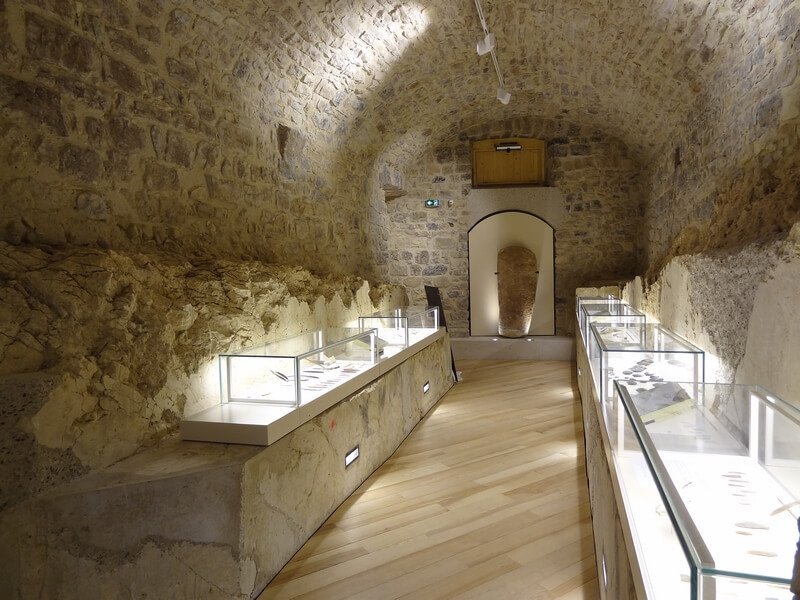
The Maison des Consuls – Museum of Art and Archaeology
Located in Les Matelles, a superb little village in the Montpellier garrigue, surrounded by its 15th century ramparts, the Maison des Consuls is the oldest museum of archaeology in the Hérault.
Entirely restored, this site has been transformed into a museum of Arts and Archaeology, creating a lively dialogue between our time and Prehistory, the modern and the ancient, archaeology and contemporary art in all its forms.
The first floor houses the two temporary exhibitions (paintings/photos/furniture…). In the basement, the vaulted rooms of this Museum of France are dedicated to the most beautiful pieces of the archaeological collection which testifies to the richness of the region in prehistoric sites.
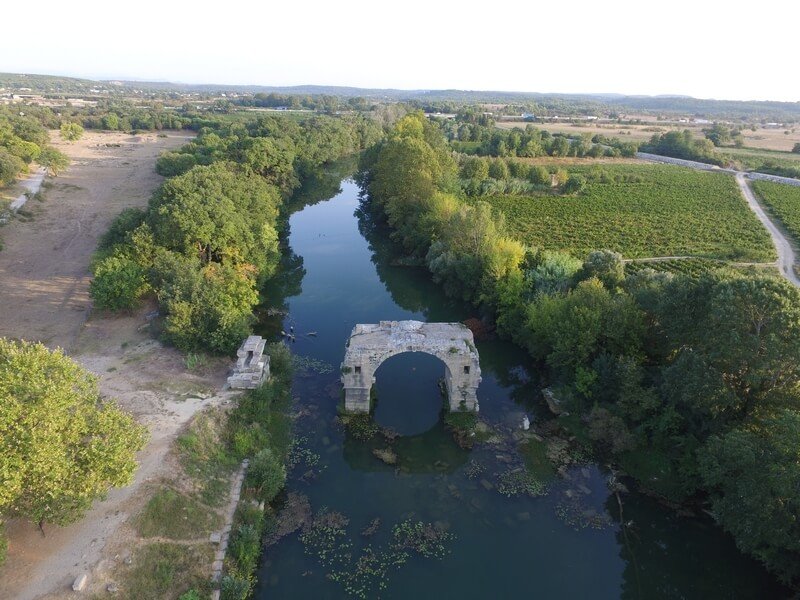
Ambrussum – Archaeological site and museum
Occupied for more than 2500 years, Ambrussum is a major archaeological site of the destination. It is the remains of one of the most developed Gallo-Roman oppidum along the Domitian Way.
On site, access to the site is free of charge. On a 2.3 km route, you can discover numerous vestiges of our ancestors, preserved in a natural environment: the Via Domitia and its road station, the Ambroix bridge, the Gallic oppidum…
The museum evokes the history of the site and highlights some of the objects excavated on the site. (excavation activity resumed in 2016)
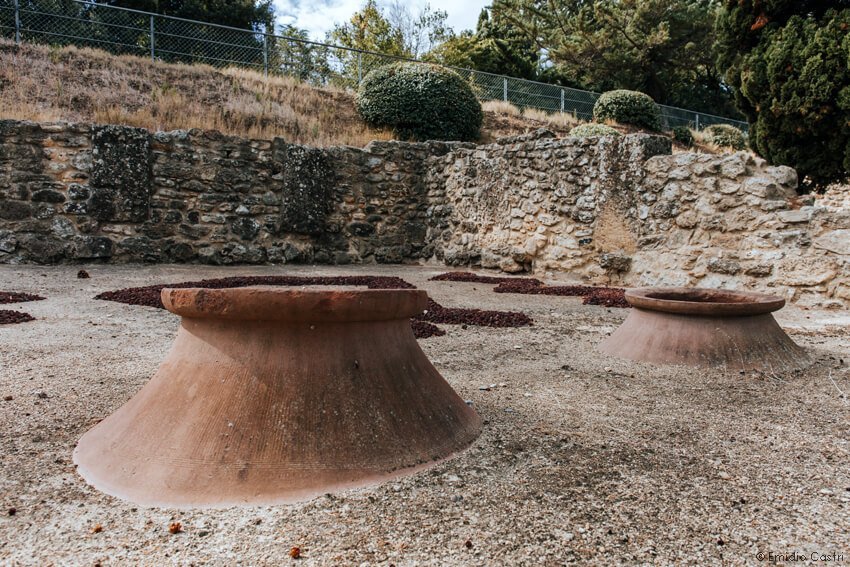
Enserune – Archaeological site and museum
Situated not far from Béziers and the Canal du Midi, the Enserune archaeological site is the remains of an ancient Gallic village established, as early as the 6th century B.C., on a rocky promontory overlooking the dry pond of Montady.
During the visit, you will discover the remains of a pre-Roman town, through the urban organisation, the foundations of houses, the streets, the vast necropolis, the dolia installed in the ground to preserve food…
The museum evokes aspects of daily life through a remarkable collection of ceramics, bone and metal objects found in the tombs.
Think of the Free PASS leaflet

Visit the exceptional sites at a reduced rate
You have had a glimpse of the must-see places in the Hérault! Most of these sites are members of the network of exceptional sites in the Languedoc.
So a piece of advice, as soon as you visit one of them for the first time (here is the list), remember to get your free PASS leaflet, valid for 2 people. It will allow you to discover the destination’s must-see sites at a reduced rate!
And to go further…
Would you like to know more about the destination “Hérault”? We recommend the website of Hérault Tourisme – the Hérault Tourist Development Agency.
To continue your discovery of the unmissable places of the Languedoc, here are the most beautiful places to visit in the Gard and Aveyron.
Frequently Asked Questions (FAQs)


